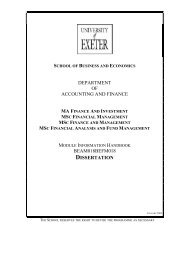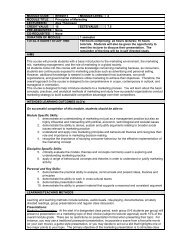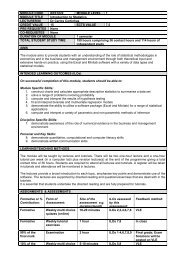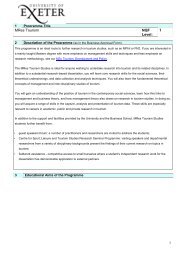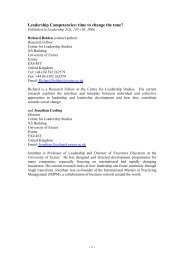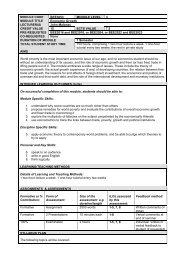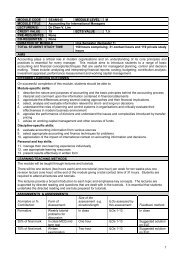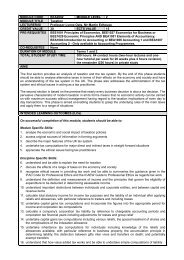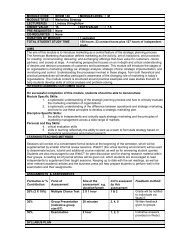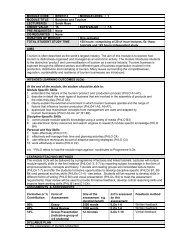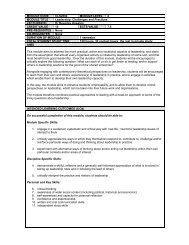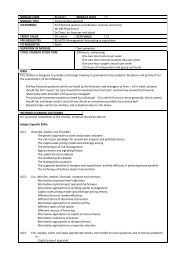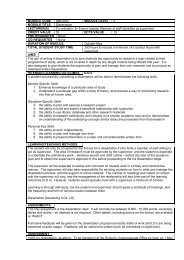Francesca Sanna-Randaccio paper - The Business School
Francesca Sanna-Randaccio paper - The Business School
Francesca Sanna-Randaccio paper - The Business School
Create successful ePaper yourself
Turn your PDF publications into a flip-book with our unique Google optimized e-Paper software.
( Wˆ<br />
TR<br />
I<br />
1<br />
<br />
18b<br />
~<br />
W ) <br />
I<br />
s( 12A<br />
8A<br />
5s<br />
4t<br />
) 6t<br />
( A A 2t<br />
s)<br />
( G G ) 0<br />
I<br />
II<br />
II<br />
II<br />
I<br />
Motta and Thisse (1994) found that welfare could increase with the introduction of an<br />
unilateral carbon tax leading to TR, in contrast with our findings. However their model differs<br />
from ours in various respects. Firstly, they consider local instead of global pollution. In our model,<br />
damage (which is related to global output) either does not decrease (when considering<br />
b b ) or decreases less than in the local pollution case. Furthermore in their analysis,<br />
bI II<br />
before t I is introduced, there is no price of emissions in country I, and thus when production shifts<br />
abroad, there is no loss of carbon tax revenue. That too implies a more positive effect on country I<br />
welfare.<br />
To summarize, an unilateral environmental policy, when it does induce a shift of<br />
equilibrium to total relocation, may have some effect in containing global emissions. Furthermore<br />
carbon revenue falls substantially as all domestic production is moved abroad, and as a<br />
consequence consumers’ aggregate welfare shrinks. Thus the net effect on welfare is likely to be<br />
negative. This is the worst scenario in terms of the job leakage as all production will be undertaken<br />
in the foreign market.<br />
7. Implications as to carbon leakage provisions in EU and US climate policies<br />
US legislation on climate change policy is still under examination. <strong>The</strong> American Clean<br />
Energy and Security Act, known as the Waxman-Markey Bill, was approved by the House of<br />
Representatives in June 2009 (HR 2454), and the Kerry-Lieberman American Power Act has been<br />
presented at the Senate in May 2010. <strong>The</strong> Waxman-Markey Bill 36 establishes quantitative criteria<br />
for identifying which manufacturing industries are “energy-intensive and trade-exposed (EITE)”,<br />
thus presumably eligible for special provisions. <strong>The</strong>y are: 1) energy intensity (or carbon intensity)<br />
is at least 5 percent and trade intensity is at least 15 percent 37 or 2) energy intensity (or carbon<br />
intensity) is at least 20 percent, regardless of the trade intensity. 38<br />
II<br />
II<br />
1,<br />
f<br />
1,<br />
h<br />
(35)<br />
22



